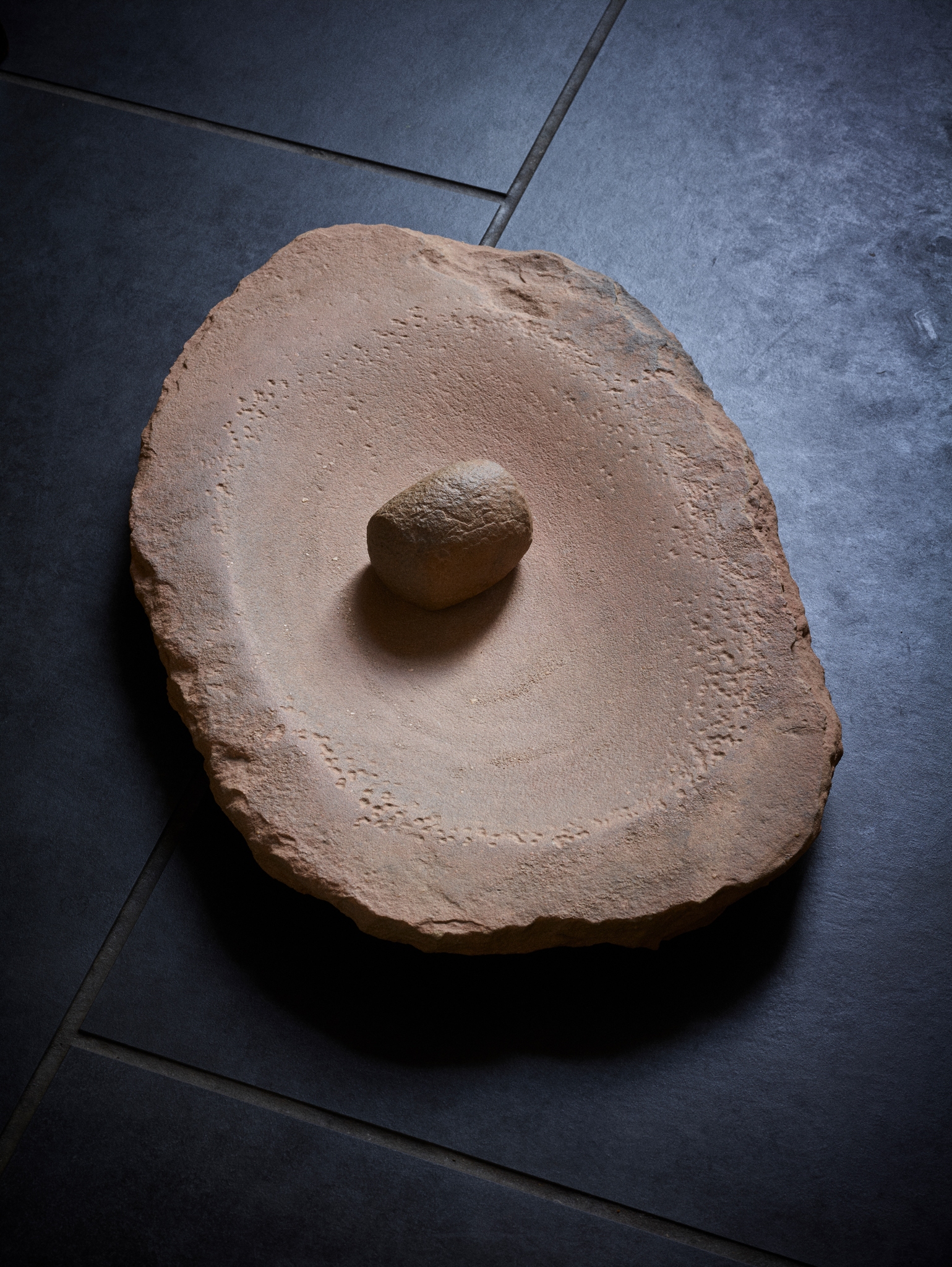AFRICAN NEOLITHIC GRINDING STONE AND PESTLE
CENTRAL SAHARA, C. 4TH – 3RD MILLENNIUM B.C.
Estimate: £400 - £600
Auction: 13 March 2025 from 13:00 GMT
Description
carved sandstone, with a central depression from repeated use, accompanied by an ancient pestle
Dimensions
62 x 40.5 cm
Provenance
Private collection, E.H., Bavaria, Germany, acquired 1980s
Rupert Wace, London, United Kingdom
Exhibited:
'The Science of Imaginary Solutions', Breese Little, London, 10th June - 17th September 2016
Footnote
12,000 years ago, global climate shifts redirected Africa's seasonal monsoons northward, bringing rainfall to a vast expanse of the modern Sahara. This transformation led to the formation of lush watersheds spanning from Egypt to Mauritania, attracting diverse animal life and eventually human settlement. The present piece dates to around 6,000 - 5,000 years before the present day, when a people known as the Tenerian herded, hunted and cultivated crops beside great lakes amidst a savannah environment. The rains departed again around 2,500 B.C., and the Green Sahara became a desert once more, with only artefacts such as this grinding stone left to bear witness to the society which had once flourished.

